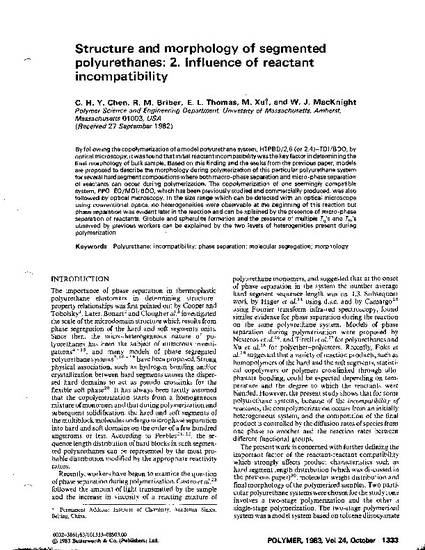
Article
Structure and morphology of segmented polyurethanes: 2. Influence of reactant incompatibility
Polymer
(1983)
Abstract
By following the copolymerization of a model polyurethane system, HTP B D /2,6 (or 2.4 )-TD I /B DO, by
optical microscopy, it was found that initial reactant incompatibility was the key factor in determining the
final morphology of bulk sample. Based on this finding and the esults from the previous paper, models
are proposed to describe the morphology during polymerization of this particular polyurethane system
for several hard segment compositions where both macro-phase separation and micro-phase separation
of reactants can occur during polymerization. The copolymerization of one seemingly compatible
system, PPO-EO/MDl/BDO, which has been previously studied and commercially produced, was also
followed by optical microscopy. In the size range which can be detected with an optical microscope
using conventional optics, no heterogeneities were observable at the beginning of this reaction but
phase separation was evident later in the reaction and can be xplained by the presence of micro-phase
separation of reactants. Globule and spherulite formation and the presence of multiple T(g)'s and T(m)'s
observed by previous workers can be explained by the two levels of heterogenities present during
polymerization.
Keywords
- Polyurethane,
- incompatibility,
- phase separation,
- molecular segregation,
- morphology
Disciplines
Publication Date
1983
Citation Information
William MacKnight, C. H. Y. Chen, R. M. Briber, E. L. Thomas, et al.. "Structure and morphology of segmented polyurethanes: 2. Influence of reactant incompatibility" Polymer Vol. 24 (1983) p. 1333 - 1340 Available at: http://works.bepress.com/william_macknight/246/
